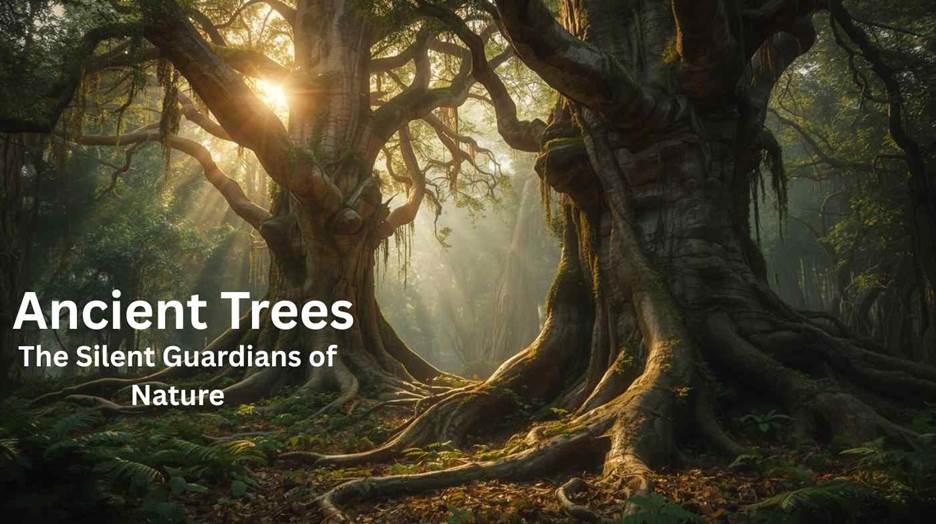Nature holds many wonders, but few are as awe-inspiring as Ancient Trees. These living monuments have stood for centuries, silently witnessing the passage of time. They are not only natural wonders but also treasures of history, culture, and science. In today’s fast-paced world, understanding the importance of Ancient Trees is essential for appreciating biodiversity, preserving ecosystems, and connecting with our roots.
Table of Contents

What Makes Ancient Trees Unique?
Ancient Trees are defined by their remarkable age and resilience. Unlike younger trees, they often display hollow trunks, wide canopies, twisted branches, and deeply textured bark. Their survival through centuries of storms, droughts, and human activity makes them extraordinary examples of endurance. Some species, like the bristlecone pine in the United States, are known to live for more than 4,000 years. These trees are not just old; they are living records of Earth’s environmental history.
Ecological Value of Ancient Trees
The role of Ancient Trees in maintaining balance within ecosystems cannot be overstated. They provide shelter for countless birds, insects, and mammals. Cavities in their trunks serve as safe homes for owls, bats, and squirrels. Their roots help stabilize the soil, preventing erosion, while their canopies regulate temperature and humidity in surrounding areas. Moreover, Ancient Trees act as carbon sinks, absorbing vast amounts of carbon dioxide and helping to mitigate climate change.
By supporting such a wide array of organisms, they function as biodiversity hotspots. One Ancient Tree can host entire micro-ecosystems, making them irreplaceable for maintaining ecological health.
Cultural and Historical Significance
Human civilizations have long admired Ancient Trees. They are often associated with mythology, spirituality, and local traditions. In many cultures, they are seen as sacred symbols of wisdom and endurance. For example, the Bodhi tree in India, under which Buddha attained enlightenment, is one of the most celebrated Ancient Trees in history. Similarly, Celtic traditions revered oak trees as symbols of strength and knowledge.
Communities worldwide continue to gather around these trees for festivals, rituals, and storytelling. In this way, Ancient Trees serve not only as natural relics but also as cultural bridges connecting past generations with the present.

Scientific Importance
From a scientific perspective, Ancient Trees are invaluable. Their growth rings provide insight into historical climate patterns, rainfall cycles, and environmental changes. This makes them natural archives that help researchers understand how Earth’s climate has evolved. Genetic studies of Ancient Trees also reveal resilience traits that could guide modern forestry and conservation practices. For example, certain species possess natural resistance to pests and diseases, knowledge that can help protect younger forests.
Threats to Ancient Trees
Despite their resilience, Ancient Trees face increasing threats. Urban expansion, deforestation, and industrial activities are major dangers. Climate change, too, poses risks by altering rainfall patterns, raising temperatures, and increasing the frequency of wildfires. Tourism and human interference sometimes harm their fragile ecosystems. Without urgent action, many of these living monuments may vanish, taking with them centuries of natural and cultural history.
Conservation Efforts
Protecting Ancient Trees requires global collaboration. Governments, environmental organizations, and communities are working together to preserve these treasures. Laws protecting heritage trees, awareness campaigns, and conservation projects are critical steps in this direction. Planting new trees near older ones helps create supportive ecosystems. Additionally, mapping and documenting existing Ancient Trees can ensure they receive the protection they deserve.
Individuals can also contribute by supporting reforestation initiatives, reducing deforestation-driven products, and spreading awareness about the importance of preserving Ancient Trees.
Why We Must Care
The survival of Ancient Trees is not just about protecting the past it is about securing the future. These trees hold knowledge, beauty, and life that no technology can replace. By conserving them, we safeguard biodiversity, cultural heritage, and environmental stability. In a world where forests are disappearing at an alarming rate, caring for Ancient Trees is a responsibility for all of humanity.
Conclusion
Ancient Trees are more than just old plants; they are guardians of history, symbols of culture, and vital players in ecological balance. Their presence enriches our world with wisdom, resilience, and life. By protecting them today, we ensure that future generations can stand in their shade, listen to the stories they whisper, and marvel at their timeless beauty. In the end, the legacy of Ancient Trees reminds us that true strength lies in endurance, and true wisdom comes from patience.